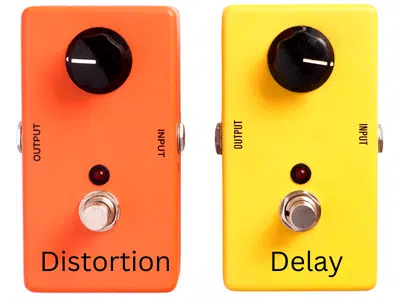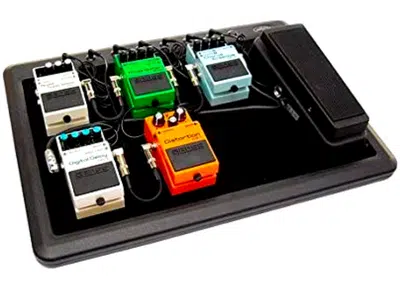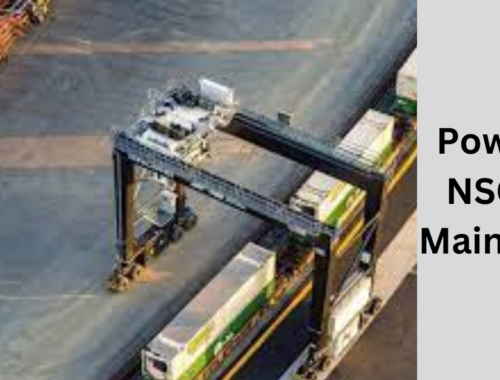
How Many Guitar Pedals Do Beginners Need? – The Best Setup!
Playing guitar is an incredibly enjoyable and versatile skill to have. Whether you’re just starting out or you’ve been playing for years, experimenting with different guitar pedals can help take your performance to the next level. But it can be hard to know which pedals are best for beginners, and How Many Guitar Pedals Do Beginners Need?
What Is A Guitar Pedal?


A guitar pedal is a device used by electric guitarists to modify the sound of their instrument. These pedals come in many shapes and sizes and often feature multiple knobs or switches to control various sound parameters. While some pedals are designed solely for tone shaping, others have multiple effects such as reverb, delay, distortion, and even fuzz.
Buyer’s Guide – How Many Guitar Pedals Do Beginners Need?

The beginner’s guitar pedal buyer’s guide offers key information on the types of effects available, how they work, and which type best suits your style of playing. Guitar pedals control different aspects of the music, such as distortion, overdrive, chorus, reverb, and delay.
Knowing what each type does and how it affects your sound is essential in finding the perfect pedal. Distortion gives a crunchy sound, while overdrive has more subtle effects on tone. Chorus adds depth and texture to an otherwise dry signal while reverb replicates a room’s natural acoustic reflections.
Can You Play Any Songs?
You can play any song on a guitar pedal! With today’s technology, it is easier than ever to find pedals that increase your sound and allow you to noodle around and create sounds of your own.
Guitar pedals come in all shapes and sizes and cover a variety of genres. From rock, jazz, blues, and metal, there are pedals for all playing levels. Whether you’re just starting or have been playing for years, there’s no limit to what kind of song you can create with an effects pedal. Many novice players start by buying their first distortion or overdrive pedal, as they can be used in almost any genre.
What Kind Of Music Do You Play?
As a beginner guitar pedal buyer, your first choice should factor in the type of music you’re hoping to play and how much money you’d like to spend on equipment. If your goal is to play rock or metal music, distortion or overdrive pedals are essential for achieving that classic crunchy sound. On the other hand, if jazz is more of your thing, then look into purchasing chorus or delay pedals which will help provide depth and texture to your notes.
Do You Already Have A Guitar And Amplifier?
The combination of a guitar and amp is the key for any beginner guitarist interested in creating different sounds. A good quality electric guitar and amplifier will allow you to explore different types of distortion, reverb, chorus, delay, and more. The right combination can give your sound that extra edge it needs to stand out from the crowd.
Before investing in a new pedal or amplifier, consider what’s already available to you – using what comes with your current setup may be surprisingly effective at producing unique sounds.
How To Power Guitar Pedals

To get started, you’ll need a power supply or adapter compatible with the pedal that provides enough current for each device. Many newer devices use USB power supplies, while others require an AC adapter or batteries.
Once you’ve chosen the right supply type, connect the power source’s positive and negative output wires to the correct jacks on your pedal board. Ensure all connections are secure and double-check before plugging in any cables or turning on any switches.
Why Do You Need Guitar Pedals?
Guitar pedals are an essential component for any guitar player. Whether a beginner or a seasoned professional, having the right pedal can make all the difference in your sound. Pedals allow you to customize and shape your tone to create unique sounds that would otherwise be impossible to achieve with just an amp and a guitar.
With guitar pedals, you can give your music the creative edge needed to stand out from the crowd. Depending on the music style you play, different types of effects will help bring out nuances in your playing and give each song its unique feel.
How Many Pedals Do You Need?
Having a few basic pedals is a great way to get started. An overdrive pedal is a classic choice – it gives you that warm tube-like distortion and can make simple chords sound full of character. A delay or reverb pedal will add ambiance to your notes and create a unique space in which your playing resonates. Finally, an EQ pedal helps you dial in the perfect tone, so your pedals sound balanced together as one ‘unit’ with the guitar.
These three types of pedals are essential components in any guitarist’s rig, but the range is wide open beyond them.
The Type Of Music You Play
You can play many different types of music, and one key component in this process is guitar pedals. Guitar pedals allow a player to change their sound from classic to more modern or experimental.
The Tone You Want
Guitar pedals are integral to many guitarists’ sounds. By employing certain pedals, guitarists can achieve the tone they want for their instrument. Whether you’re looking for a vintage-style sound or a modern crunch, there’s a pedal to help you get it.
The Guitar You Use
The guitar is an incredibly versatile instrument. Not only can you create a broad range of sounds with the strings alone, but you can also expand your musical possibilities with the addition of guitar pedals.
Guitar pedals are small devices that connect to an electric guitar and modify its sound in various ways. They come in many different types, from distortion and delay to chorus and reverb. With these effects, a musician can create new sonic textures or replicate classic sounds from iconic guitar players throughout history.
Single-Coil pickups
Single-coil pickups are an essential component of electric guitars, allowing them to create various tones and sounds. These pickups are typically mounted on the body of a guitar and produce sound when the strings vibrate near the magnetic field created by the pickup. Single-coil pickups provide a bright, punchy tone often associated with classic rock and blues music.
Humbucker Pickups
Humbucker pickups are a type of guitar pickup that has become popular for their warm, full sound. Humbuckers are two single-coil pickups wired together, allowing them to cancel out any hum or interference in the signal. This gives the player a smooth and balanced tone across all frequencies.
Active Pickups
Active pickups allow guitarists to access incredible sustain, precise tonal control, and high output levels. They also offer a unique sound that many players covet. Active pickups are powered by an onboard battery and require higher input levels from the strings than traditional passive pickups. This additional power boosts the signal before it reaches the amplifier for more dynamic tones with greater clarity and responsiveness.
The Amp You Have
Guitarists, don’t let your amp hold you back. A great guitar sound starts with a quality amplifier. But not every player has the budget for a high-end model. Fortunately, there are plenty of ways to get more out of your existing amp, no matter how old or low-quality.
Tube Amps
Tube amps are popular for guitarists who want to create unique and dynamic sounds. These amps use vacuum tubes instead of transistors to produce sound, giving them their signature warm and bright tones. Tube amplifiers can be used on their own or combined with other effects, such as guitar pedals, to achieve a variety of tones and textures.
Non-Master Volume Amps
These amps have a wide range of sounds, from crisp and clean to distorted and overdriven. Unlike other amplifiers, non-master volume amps do not have a master volume knob or control. Instead, the overall level is controlled by adjusting each amplifier’s gain levels during the pre-amp stage.
This allows for more flexibility when manipulating the tone of your guitar or bass without having to worry about excessive feedback or noise.
Master Volume Amps
The Master Volume Amp is one of the most important components of any guitar pedal rig. Used to control the overall volume level of your amp, these amps provide a great way to tap into your sound without sacrificing tone or performance.
High-Gain Amps
High-gain amps offer more versatility when it comes to achieving the desired sound. High-gain amps are ideal for those looking for a heavier tone or more output from their amplifier, allowing them to play at higher volumes without losing clarity or sound clarity.
Multi-Channel Amps
Multi-channel amps generally have at least three separate channels – one for clean sounds, one for lower gain distortion, and one for higher gain distortion. Some models even have four or more channels that can be used to create various tones in quick succession.
Modeler Amps
A modeler amp is an amplifier with a built-in digital signal processor that allows players to customize the sound of their instrument by adjusting the pre-set tone and effects created within the unit’s software interface.
Your Primary Focus
As an aspiring musician, your primary focus should be mastering the guitar. This important instrument is the cornerstone of many musical genres and styles, from jazz to rock to classical music. The guitar can be used as a solo instrument or as part of an ensemble.
Knowing the various components and how they work together will help you develop better techniques and form deeper connections with your instrument.
Your Budget
Guitars come in all shapes and sizes, so it can be tricky to find the one that fits your skill level and wallet. Here are a few tips on how to choose the perfect guitar within your budget:
First, consider what type of guitar you want to purchase. Electric guitars cost more than acoustic guitars because they require additional components like amplifiers and effects pedals. If you’re new to playing the guitar and don’t want to invest in extra gear, an acoustic guitar could be a great choice within your budget.
Types Of Pedals

Guitar pedals from various brands are readily available. Each type is characterized by the way it works. The pedals mentioned here are the most popular variety in their functionality.
| Pedal Type | Usage | Function |
|---|---|---|
| Reverb | ✅✅✅ | Adds reverberation to the audio signal |
| Delay | ✅✅✅✅ | Adds delay and echo to the audio signal |
| Tremolo | ✅ | Makes the audio signal louder and softer |
| Chorus | ✅✅✅ | Multiplies and modulates audio signal (for “thicker” sound) |
| Phase Shifter | ✅✅✅ | Frequency-based modulation (makes a “whooshing” sound) |
| Flanger | ✅✅✅ | Time-based modulation (makes “flanging” sound) |
| Overdrive | ✅✅✅✅ | Boosts signal and adds sustain |
| Distortion | ✅✅✅✅ | Clips signal with mild to moderate distortion |
| Metal | ✅✅✅✅ | Aggressive distortion with high and low-frequency cuts |
| Fuzz | ✅✅ | Clips signal with severe distortion |
| Wah-wah | ✅✅✅ | Varies guitar signal tone |
| Compressor | ✅✅ | Keeps sound level constant and adds sustain |
| Graphic EQ | ✅✅ | Adjusts the lows, mids, and highs |
| Noise Gate | ✅✅✅ | Removes noise from the guitar signal |
| Digital Tuner | ✅✅✅✅ | Tunes guitar |
Pedal Usage: ✅ = Rarely, ✅✅ = Fairly Common, ✅✅✅ = Common, ✅✅✅✅ = Very
Guitar Pedal Setups – How Many Guitar Pedals Do Beginners Need?
How you set up your guitar pedals can be just as important as the kind of pedals you have. Certain pedals work best when installed in the correct order and connected to your guitar and amplifier in the proper way.
What Is An Effects Loop?

An effects loop is an important component of electric guitar rigs, but it cannot be very clear. An effects loop is a signal path that allows players to place certain pedals and effects in the chain between the guitar’s pre-amplifier and amplifier section.
When activated, an effects loop sends a copy of your signal from your amp’s pre-amp section to your pedals and then back into the power amp section. This allows you to easily add distortion, chorus, or delay pedals without muddying up your clean tones.
What Pedals Go In An Effects Loop
An effects loop is an important piece of equipment for any guitarist. It is a circuit that allows the guitarist to add guitar pedals and other devices into the signal chain between their pre-amp and power amp.
The most common type of pedal in an effects loop is a modulation pedal such as chorus, flanger, vibrato, phaser, or tremolo. These will give your sound more character by adding texture and depth to your tone.
What About Musical Genre?
From jazz to blues to rock n’ roll and metal, guitars provide the perfect foundation for any music, from low-fi acoustic vibes to high-energy electric riffs.
Whether you’re looking for gentle strumming in folk music or intense shredding in hard rock, guitars have something unique to offer in every genre they touch.
How To Arrange Guitar Pedals
In the following section, I will also give tips on how best to connect particular sorts of pedals to each other, as appropriate. It all comes down to what sounds best to me, and my preference guides other guidelines.
Rock And Metal Pedal Setup

A typical rock and metal pedal setup includes four main components:
An overdrive/distortion, an EQ, a delay/echo effect, and a compressor. The overdrive or distortion pedal helps sustain notes while adding some dirtiness for crunchier rhythm tones.
An EQ pedal can be used to shape the guitar’s tone by cutting or boosting different frequencies as desired.
A delay or echo effect provides a subtle reverb-like effect that adds depth to your playing style.
Finally, a compressor helps even out dynamics within your playing so that each note has consistent volume and sustained level throughout the performance.
Blues Pedal Setup

Any good blues pedal chain starts with the iconic tube screamer. This classic overdrive pedal provides a distortion and smooth sustain to many legendary guitarists’ tones, from Stevie Ray Vaughan to John Mayer.
It’s also great for boosting more subtle effects like delay and reverb.
Additionally, an EQ pedal can shape your sound even further by giving you control over mids, highs, and low-end frequencies before sending the signal through other effects pedals in the chain.
Country Pedal Setup

The key components for a great country-style pedalboard are overdrive pedals, compression pedals, and reverb or delay effects.
Overdrive pedals add warmth to your sound while also adding grit and sustain. They’re perfect for creating classic country licks and solos.
Compression pedals help keep notes even throughout long phrases and give your playing more punch.
Reverb or delay effects can be used either subtly or heavily, depending on what kind of vibe you’re going for with your music.
Jazz Pedal Setup

With a few key components, you can also create a professional-sounding jazz pedalboard for your guitar. The first step in setting up your pedals is to place them in order of importance. Start by placing a compressor at the beginning of your signal chain, followed by any distortion or overdrive you want to use for lead sounds.
Then, place modulation effects such as chorus or delay after the distortion/overdrive so that they don’t interfere with each other’s output levels. Finally, round off with a reverb or ambiance effect to create more space in your mix and give it depth.
Pedal Setups For Amps Without An Effects Loop

An effects loop is a circuit built into the amp that allows you to connect more than one pedal and route them through the amplifier for increased tonal options. Without an effects loop, you can still achieve great sounding tones by placing your pedals in front of the amp or line with its input.
Conclusion – How Many Guitar Pedals Do Beginners Need?
The number of guitar pedals a beginner needs depends on the type of sound they hope to achieve. A guitarist can start with just a few basic effects, such as reverb and delay, and build their pedalboard from there. Experimenting with different combinations of product pedals can be a fun way to create unique sounds and broaden a player’s musical palette. When it comes to guitar pedals, the possibilities are endless.
Frequently Asked Questions

What Pedals Should You Get First (“Must Have” Guitar Pedals)?
When it comes to must-have guitar pedals, there are a few that stand out. The first is an overdrive pedal. Another must-have pedal is a delay pedal. Delay pedals allow you to add echoes and repeat to your guitar notes. A chorus pedal is essential for any guitarist who wants to add depth and texture to their playing.
Do Pedals Need AC Or DC?
It depends on the type of pedal. Most standard guitar pedals require 9V DC power, which can be supplied by a battery or an adapter. However, some pedals require more power than 9V and must be powered with an AC adapter. Some boutique pedals may even require certain voltage levels that are unavailable in batteries or standard AC adapters.
Read Also: ARE ALL HUMBUCKERS THE SAME SIZE? WHAT YOU NEED TO KNOW – COMPREHENSIVE GUIDE
Zohaib Khan
I am Zohaib Khan, a Content Writer with over three years of experience. As a content writer for various online businesses, I know many standout fields, including fashion, makeup, Tech, and the auto industry. I'm also an expert in SEO & Word press.

How to Find the Best Violin Bridge
You May Also Like

Exploring Syntellis: Roper Technologies’ Strategic Solution for Higher Education and Healthcare
January 4, 2024
Unlocking the Power of NSCorp Mainframe: Navigating the Backbone of Efficient Rail Operations
January 17, 2024
